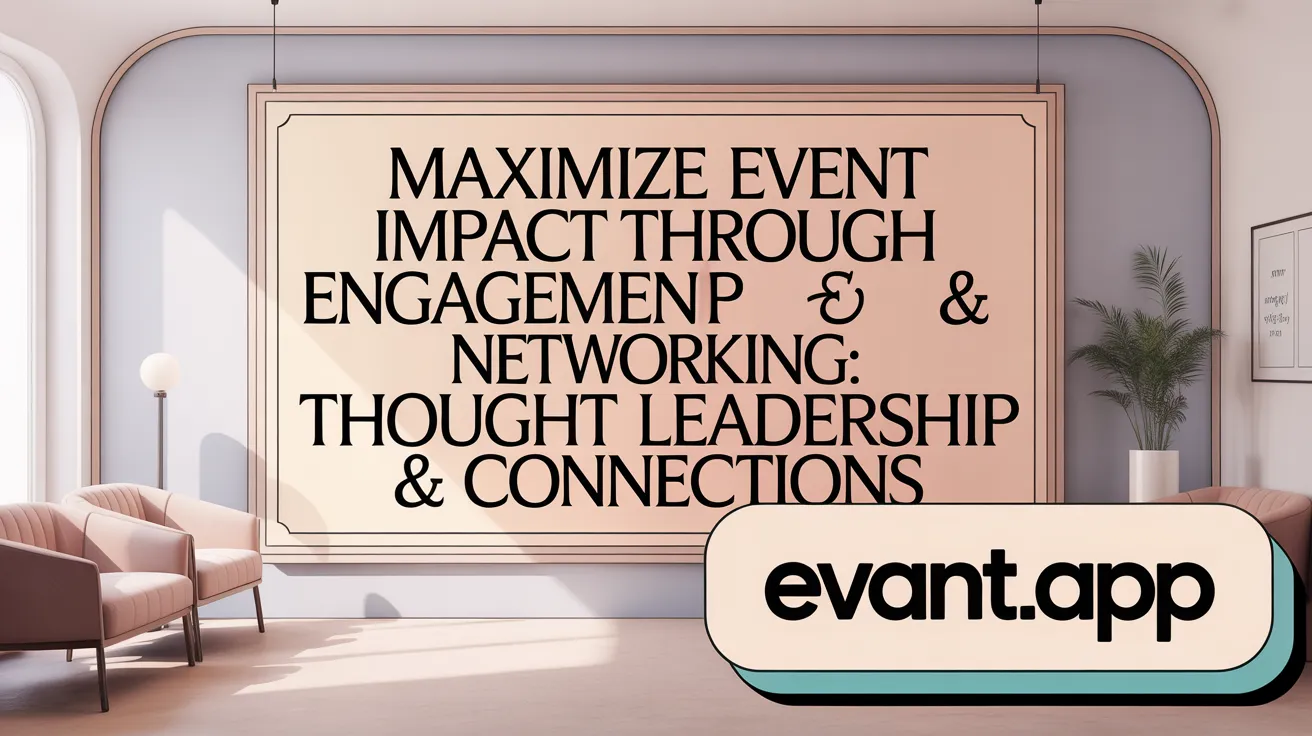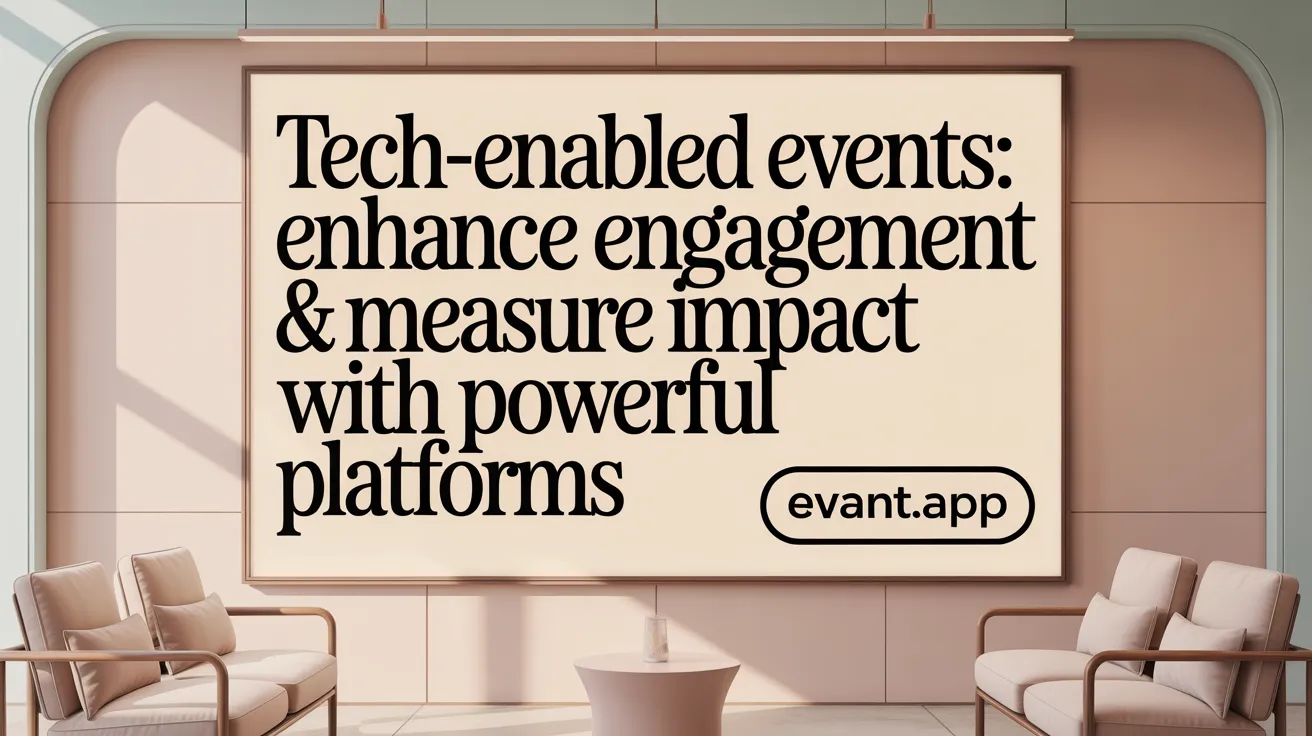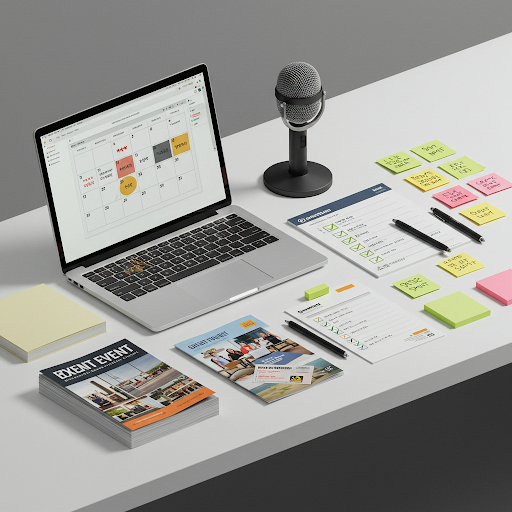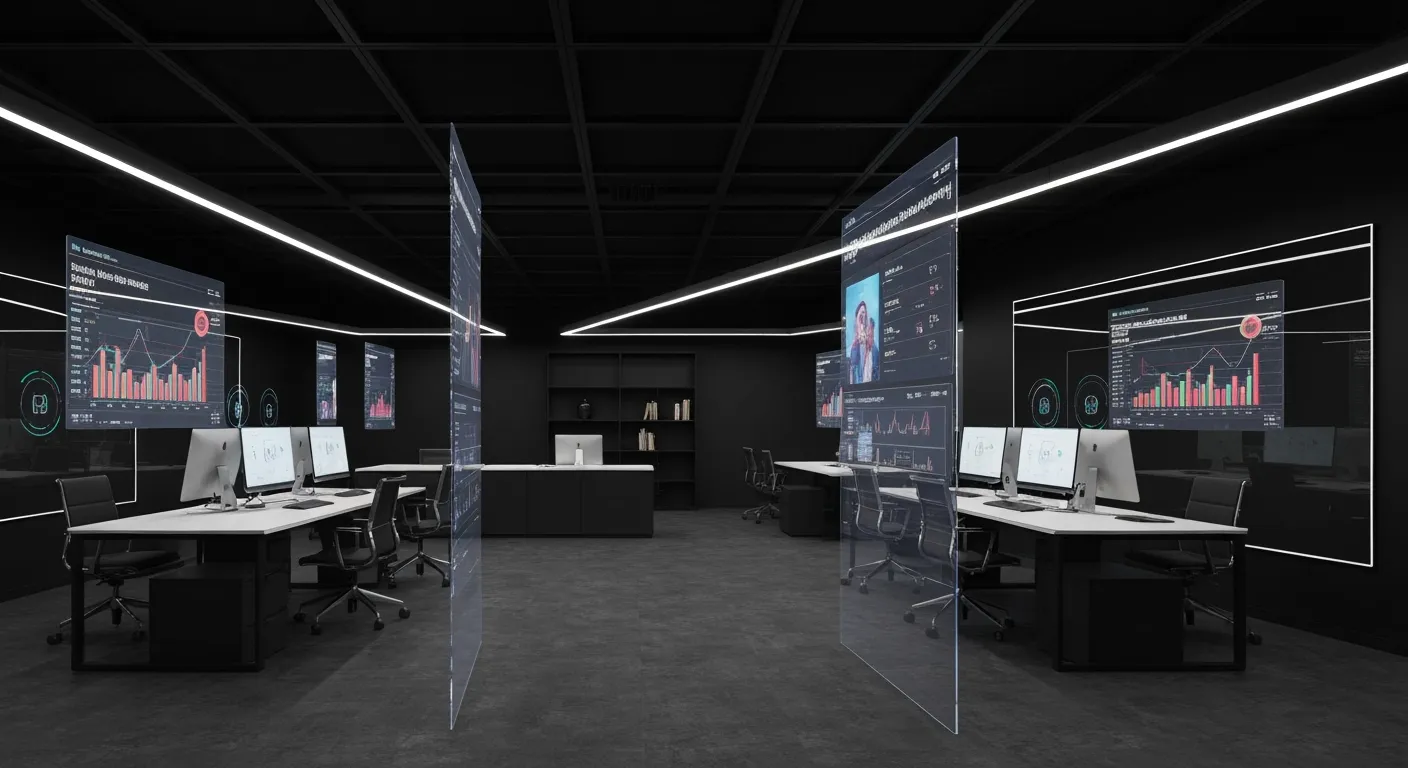Introduction to Evant's Proven Marketing Power
In today's competitive marketing landscape, the effectiveness of event marketing platforms like Evant hinges on demonstrable success through powerful case studies and measurable impact. This article explores real-life examples and insights that underline Evant's effectiveness in driving brand visibility, lead generation, and customer engagement across diverse industries. Drawing on real-world data, marketing trends, and strategic evaluation methodologies, we illustrate how Evant empowers brands to achieve outstanding results through experiential and digital marketing approaches.
Crafting Compelling Case Studies: The Heart of Evant's Storytelling Success

What makes an effective case study?
An effective case study captures attention right from the headline. This headline should clearly name the client, present the challenge they faced, and highlight a measurable outcome. This approach immediately signals the case study’s relevance and impact. For more on crafting these, see Compelling Case Study Headlines.
Importance of a compelling headline
The headline acts like a hook. Including the client’s name and a concise summary of their challenge paired with an impressive metric draws readers in and boosts credibility. For example, a case study that announces a brand increased web traffic by 500,000 visits catches the eye and promises valuable insights. Explore examples and techniques in Client Success Stories.
Elements of an effective case study
Effective case studies tell a compelling story:
- Recognizable brand: The reader can relate to the client or industry.
- Relatable problem: The challenge is a common or significant issue that the audience understands.
- Effective solution: The steps or strategies taken are clear and actionable.
- Impressive results: Outcomes are quantifiable and impressive.
More tips and examples can be found in Storytelling in Case Studies.
Inclusion of measurable outcomes
Measurable metrics, such as percentage increases in leads or website visits, provide concrete evidence of success. They make the results tangible, allowing readers to appreciate the business impact more clearly. For strategies on integrating data and results, see Using Visual Data and Client Quotes.
Use of client quotes and visual data to demonstrate success
Adding client testimonials strengthens trust and authenticity. Visual data like graphs or infographics conveys complex information quickly and makes the story more engaging and memorable. Learn more from SimpleReach Intel Case Study which illustrates these techniques effectively.
Together, these elements form the heart of Evant’s storytelling success, ensuring every case study is both informative and persuasive.
Showcasing Evant’s Impact Through Leading Brand Case Studies

What are some real-world examples of successful case studies relevant to Evant?
Case studies are invaluable for showcasing a company's impact with clear, measurable results. They must tell an engaging story: a well-known client, a recognizable challenge, and a solution delivering impressive outcomes.
Examples of successful case studies
Several standout case studies provide valuable insights on crafting impactful marketing narratives:
SimpleReach and Intel: This case study highlights how SimpleReach helped Intel drive 500,000 visits through an effective content marketing campaign. By using compelling visuals and authentic client quotes, it demonstrates success in traffic generation. Learn more about SimpleReach Intel Case Study.
LeadGnome and Host Analytics: LeadGnome’s case study illustrates significant improvements in lead quality. The focus is on ease of system integration and clear, measurable enhancements in lead mining efficiency. See details in the LeadGnome Host Analytics Case Study.
Bitly and Vissla: Bitly’s platform case study addresses the complexities of omnichannel traffic tracking. It emphasizes process benefits, simplicity of the solution, and uses visuals to highlight the advantages. Explore the Bitly Vissla Case Study.
These cases demonstrate how combining a relatable problem with a well-articulated solution and quantifiable results creates compelling evidence of success. For further guidance, see resources on Marketing with Case Studies and Storytelling in Case Studies.
By leveraging similar storytelling and measurable outcomes, Evant can effectively communicate its value to potential clients, enhancing trust and engagement throughout the buyer’s journey.
The Rising Importance of Experiential Marketing in Event Success

How does experiential marketing contribute to event effectiveness?
Experiential marketing is rapidly becoming a vital element in event success and overall business growth. A significant share of marketing budgets, ranging from 21% to 50%, is now reserved by Chief Marketing Officers (CMOs) for experiential marketing strategies. This allocation reflects the growing recognition of its impact. See more on Experiential Event Statistics.
The experiential marketing services sector is projected to reach approximately £57 million by 2027, signaling robust market growth and industry confidence in this approach. Supporting this momentum, 70% of companies plan to increase their total marketing budgets in 2024, with a notable focus on events as a key channel. Learn about Marketing Budget Allocation to Experiential Marketing.
The financial benefits are compelling, with companies reporting a 10x return on investment (ROI) from event attendees compared to non-attendees. This impressive ROI, along with 83% of marketers highlighting events as critical for business growth and 77% seeing events as their most effective marketing channel, underscores why events and experiential marketing are strategic priorities. Insights can be found at Events Critical for Business Growth.
Furthermore, 80% of senior brand managers have increased budgets for experiential events in recent years, reflecting widespread organizational belief in their ability to generate tangible business results. In conclusion, experiential marketing not only enhances engagement but is a powerful driver for measurable event effectiveness and business success. Additional details on Event Marketing Effectiveness and how to Measure Event Success further illustrate these points.
Real-Life Small Business Successes: Digital Marketing Case Studies with Measurable Outcomes
How do small businesses demonstrate success through digital marketing case studies?
Small businesses showcase tangible growth by implementing focused digital marketing tactics tailored to their needs. These case studies highlight how strategic online efforts lead to increased customer engagement and revenue.
Examples of Digital Marketing Success in Small Businesses
Local Bakery: Grew foot traffic and sales by combining organic social media content with paid ads targeting local customers, showing the power of localized marketing.
Retail Store: Revamped its website for SEO and built backlinks, resulting in a remarkable 122.27% growth in organic traffic, significantly boosting online visibility.
Home Services Company: Executed targeted pay-per-click (PPC) campaigns with keyword research, ad split testing, and remarketing. This led to an 85.71% increase in branded leads and a 45.02% reduction in cost per click, optimizing lead quality and budget.
Fitness Studio: Applied segmented email marketing with personalized messaging, achieving a 30% rise in conversion rates and a 50% increase in the email subscriber list, showing the impact of personalized communication.
Local Restaurant: Improved online presence by redesigning its website, rectifying Google penalties, and enhancing keyword optimization. This strategy doubled organic traffic by 122.27% and soared e-commerce transactions by 336%, a substantial boost in online sales.
These case studies underline how well-crafted digital marketing approaches—ranging from SEO to paid advertisements and email campaigns—deliver measurable outcomes for small businesses, enhancing their growth and competitive edge.
Evaluating Event Effectiveness: Metrics and Methods That Matter
What are key methods to evaluate event success effectively?
Evaluating event success requires a balanced approach using both quantitative and qualitative metrics. Quantitative data includes registration numbers, actual attendance, and revenue generated. These numbers reveal the event's reach and financial impact. For more details on Measure event success and Event success metrics.
Registration and Attendance Tracking
Tracking registration trends versus actual attendance helps assess the effectiveness of pre-event marketing and logistics. High registration but low attendance could indicate issues with engagement or timing. Insights on Event check-in metrics and Measuring event turnout are valuable here.
Engagement and Satisfaction Measurements
Engagement during the event is gauged through participation rates in sessions, live polls, Q&A, and social media activity such as hashtag mentions. Post-event surveys, including Net Promoter Scores (NPS), capture attendee satisfaction and highlight areas of strength and improvement. Learn more about Event success analysis and Post-event surveys.
Sponsor ROI and Revenue Analysis
Measuring sponsor success involves analyzing audience interactions at sponsor booths, feedback from sponsor satisfaction surveys, and retention rates for future collaborations. Revenue analysis compares overall costs with income to evaluate financial ROI. For comprehensive Sponsor ROI analysis and Financial success metrics, see these resources.
Using a combination of these methods provides actionable insights into an event’s impact. Real-time data collection during events, coupled with thorough post-event feedback, supports continuous improvement and demonstrates value to stakeholders. For further guidance on post event report and effective evaluation techniques, refer to these expert articles.
Measuring Fundraising and Brand Events: KPIs That Reflect True Impact
What KPIs are essential to measure the success of fundraising and brand events?
To effectively measure the success of fundraising and brand events, a combination of quantitative and qualitative KPIs is critical. These indicators provide a comprehensive view of event performance, from attendee engagement to financial outcomes. For more details on measuring event success, see 7 indicators to measure the success of your event and How to measure success of an event.
Ticket Sales and Check-Ins
The number of tickets sold and the actual check-ins at the event serve as fundamental quantitative metrics to assess turnout. This data helps understand the level of interest generated and the event's ability to convert registrations into attendees. Learn from Effective event ticketing case studies for more on ticket sales and event exclusivity tactics.
Post-Event Satisfaction Surveys
Collecting attendee feedback through post-event surveys, including the Net Promoter Score (NPS), sheds light on participant satisfaction and overall sentiment toward the event. High NPS scores often correlate with positive experiences and increased likelihood of future attendance or support. For survey strategies and measurement, refer to Different Methods of Evaluating Event Success.
Social Media Engagement Metrics
Monitoring social media activity such as hashtag mentions, shares, and interactions on platforms like Twitter, Facebook, and Instagram signals the event’s popularity and reach beyond physical attendance. This buzz can amplify brand exposure and attract future attendees. See Event marketing effectiveness: Three key factors and 7 indicators to measure the success of your event for insights on social media indicators of event buzz.
Revenue and Sponsor Satisfaction
Tracking the net revenue generated after deducting event costs measures financial success. Equally important are sponsor satisfaction surveys, which evaluate the value sponsors gained, often using their own NPS scores. Positive sponsor engagement can foster long-term partnerships and future funding. For financial KPIs and sponsor impact, consult Different Methods of Evaluating Event Success and Measuring the success of your event.
These KPIs collectively inform event organizers about turnout efficiency, attendee experience quality, marketing impact, and sustainability through sponsorships, ensuring a well-rounded appraisal of event effectiveness. For a comprehensive list of KPIs and their use in event planning, see The most important event KPIs.
Leveraging Audience Engagement and Networking to Amplify Event Impact

How do thought leadership and networking contribute to event marketing effectiveness?
Thought leadership and networking are essential components that significantly boost the impact of event marketing. Thought leadership involves showcasing expertise and driving meaningful conversations through formats such as keynote speeches, client speaking slots, workshops, and panel discussions. These engagements not only establish the brand's authority but also attract and hold the audience's attention, creating a compelling narrative around the event.
Networking plays a complementary role by facilitating direct, personalized interactions. Effective networking opportunities include one-to-one meetings, round tables, VIP sessions, and even the use of mobile apps to connect attendees. By targeting diverse groups such as existing clients, prospects, analysts, and industry influencers, events can foster valuable relationships that often translate into business growth.
Thought leadership formats
- Keynote speaking
- Client speaking slots
- Workshops
- Panel discussions
- On-site content creation
Networking opportunities types
- One-to-one meetings
- Round tables
- VIP meetings
- Mobile app facilitated connections
Audience targeting
- Clients
- Prospects
- Analysts
- Industry influencers
Branding and visibility enhancements
Brand visibility is heightened by strategic use of exhibition spaces, sponsorships, social media coverage, and inclusion in press releases. These tactics help maintain top-of-mind awareness among attendees and wider audiences, reinforcing brand presence beyond the event itself.
Bringing together thought leadership, targeted networking, and strong branding efforts amplifies the overall effectiveness of event marketing, creating richer engagement and better opportunities for conversion.
Utilizing Technology and Platforms to Optimize Event Experiences

What are the different event formats and how does technology fit in?
Events today come in three main formats: in-person, online, and hybrid. In-person events allow direct human interaction, online events remove geographical barriers, and hybrid events combine the benefits of both. Technology plays a central role in enabling these formats by providing communication tools and engagement platforms that cater to various audience needs. For more insight, see Evaluating event effectiveness.
Why is technology important for event success?
Technology enhances event success by supporting engagement and interaction. Tools like event platforms offer customizable landing pages, live polls, Q&A sessions, and rich analytics that track attendee behavior and satisfaction in real time. These capabilities improve the attendee experience and help organizers measure impact effectively. For detailed metrics, refer to Measure event success.
How do moderated online sessions benefit events with complex content?
For meetings involving difficult or technical content, moderated online sessions increase participant satisfaction, content retention, and loyalty. Moderators facilitate discussions, manage questions, and keep sessions focused. However, for simpler content, the cost of moderation may not be justified. See Evaluating event effectiveness for more details.
What platform features drive attendee engagement?
Modern event platforms include features such as integration with marketing tools (Mailchimp, Eventbrite, Google Ads), interactive elements (chat, polls, breakout rooms), and automation for follow-up. These features streamline promotion, deepen audience interaction, and collect actionable data for future event planning. Learn more about Event marketing strategies for 2025.
By leveraging a combination of event formats and powerful technology tools, organizers can optimize attendee experiences and maximize marketing effectiveness in an evolving event landscape.
Strategic Ticketing and Pricing Models That Drive Event Attendance and Revenue
How can ticketing and pricing strategies enhance event effectiveness?
Effective ticketing and pricing strategies play a crucial role in boosting event attendance and maximizing revenue. One proven approach is tiered pricing, which creates a sense of exclusivity and urgency by offering different price levels and incentives. For example, the Floyd Festival uses tiered pricing to encourage early ticket purchases and premium experiences, helping to drive early cash flow and build momentum.
Offering diverse ticket options is another powerful strategy. Events like Country Jam USA Festival provide cater to different preferences and budgets, ensuring that a wider audience can participate. This inclusivity not only increases attendance but also improves the overall accessibility of the event.
Community engagement adds another layer of value to pricing strategies. The Livingston Roundup Rodeo enhances attendee experience and local support through auctions and partnerships with community causes. These initiatives strengthen community ties and boost attendance by connecting the event to shared values and interests.
Finally, implementing limited sale windows leverages the psychological effect of FOMO (fear of missing out). Events such as Suwannee campgrounds in Florida use restricted ticket sales to generate urgency, creating demand spikes and fostering a strong, loyal community eager to attend.
Together, these elements create dynamic ticketing environments that drive demand, enhance the event experience, and optimize revenue generation.
Deploying Comprehensive Promotion Strategies to Maximize Event Reach
What promotion strategies effectively increase event awareness and attendance?
Effective event promotion involves a blend of digital tactics designed to boost visibility and attract attendees.
Dedicated Event Websites and Landing Pages:
Creating a focused website or landing page serves as a hub for event information, registration, and updates, making it easier for potential attendees to learn and commit. For more on Event Marketing Strategies for 2025, see this resource.
Promotional Videos and Email Campaigns:
Videos capture attention with dynamic storytelling about event highlights or speakers. Paired with segmented email campaigns targeting different audience groups, these tools nurture interest and encourage sign-ups. Learn more about Email Nurturing with Case Studies and Digital Marketing Case Studies for Small Businesses.
Social Media Marketing and Influencer Partnerships:
Utilizing social networks massively amplifies reach. Collaborating with influencers who align with the event's theme enhances credibility and taps into their loyal followers, broadening awareness. For insights on Social Media Coverage in Events and Social Content Creation at Events.
Creating Urgency with FOMO:
Generating a fear of missing out (FOMO) by limited ticket sales, countdown timers, and exclusive offers drives early purchases and maintains momentum. Explore effective Event Ticketing Case Studies to understand how event exclusivity and urgency tactics work.
Live Streaming and Content Repurposing:
Streaming the event live opens doors for remote participation, expanding your audience. Post-event, repurposing content through recordings, highlights, and social clips prolongs the event's impact and keeps your brand top-of-mind. Check out Repurposing Case Study Content and Using Visual Data and Client Quotes.
Together, these strategies craft a well-rounded promotion approach that not only attracts attendees but also engages them before, during, and after the event.
Post-Event Reporting: Capturing Insights for Future Success
Why is writing a post-event report important and what should it include?
Writing a post-event report is critical because it offers a detailed analysis of the event’s success, challenges faced, and return on investment (ROI). This enables event organizers to evaluate whether the event met its objectives. Additionally, these reports serve as valuable historical records that help in securing sponsorships and funding for future events (post event report).
A comprehensive post-event report should include several key sections. Start with an executive summary that succinctly outlines the event and its major outcomes. Include an event overview providing context and details about what took place. Analyze the budget to highlight financial performance and marketing efforts to show reach and engagement. Gathering stakeholder feedback helps capture different perspectives on the event’s effectiveness. Document lessons learned to identify opportunities for improvement and offer actionable insights to guide future event planning (post event report.
Purpose and benefits of post event reports
Post-event reports aid continuous improvement and strategic decision-making. They boost accountability by showing stakeholders how resources were used. Sponsors and partners can see clear evidence of impact, increasing the likelihood of ongoing support. Reports also help build corporate memory by preserving knowledge and benchmarks for comparison over time (post event report.
Key elements of comprehensive reporting
Effective reports balance quantitative data (attendance numbers, revenue, social media metrics) and qualitative feedback (surveys, interviews). Visual data representations like charts and graphs make complex information easier to understand and communicate. Including budget breakdowns and marketing analytics clarifies financial and promotional success (Measure event success, Event success metrics).
Challenges and common pitfalls
Common challenges include incomplete data collection, relying too heavily on subjective opinions, or ignoring negative feedback. Reports that lack actionable recommendations or fail to engage stakeholders limit their usefulness (post event report.
Use of templates and visual data
Using standardized templates ensures consistency and completeness across reports. Visual tools such as infographics and dashboards help highlight important trends quickly and effectively, supporting better decision-making for future events (post event report elements.
The Role of KPIs in Guiding and Measuring Event Success
How do KPIs influence event planning and success measurement?
KPIs, or key performance indicators, act as measurable targets that align with specific event objectives, helping organizers plan effectively and evaluate success rigorously. By choosing relevant KPIs, event teams can monitor progress before, during, and after the event to ensure goals are met. Learn more about Event KPIs.
Selecting appropriate KPIs based on objectives
The type of event and its goals largely dictate which KPIs to select. For instance, a brand awareness event might prioritize social media mentions and website traffic, while a lead-generation event would focus on registration numbers, attendance, and lead quality. Clear objectives ensure the measured KPIs accurately reflect success factors. See Different Methods of Evaluating Event Success for details.
Different KPIs for planning, execution, and evaluation
During planning, metrics like registration trends and email campaign performance are crucial. Execution requires monitoring attendance rates, participant engagement, and technical aspects. Post-event evaluation emphasizes revenue generated, participant satisfaction, social media impact, and lead conversion. For comprehensive strategies, refer to Measure event success.
Examples of common event KPIs
- Number of registrations vs. actual attendees
- Social media engagement and hashtag mentions
- Revenue after costs
- Participant satisfaction scores and Net Promoter Score (NPS)
- Lead generation and conversion rates
- Sponsor exposure and satisfaction
Explore these KPI examples in depth here: Fundraising event KPIs
Balancing quantitative data with qualitative insights
While quantitative data provides objective measures, qualitative feedback through surveys and interviews offers insight into attendee sentiments and experience quality. Together, these create a comprehensive picture of event performance, guiding future improvements and resource allocation decisions. Enhance your understanding with post event report.
Comparing Event Delivery Platforms: Optimizing Content and Engagement
Differences between face-to-face, online, and moderated online events
Event platforms vary significantly in how they deliver content and engage attendees. Face-to-face events offer direct, in-person interaction, enabling natural networking and real-time feedback. Online events without a moderator tend to be more passive, which can limit engagement and interaction. Online events with moderators bridge these gaps by guiding discussions, encouraging participation, and maintaining focus during sessions. For detailed research on this topic, see Evaluating Event Effectiveness Across Alternate Platforms.
Impact on attendee satisfaction and loyalty
Research shows that face-to-face events and online sessions with active moderation result in higher attendee satisfaction, loyalty, and better content retention. For more challenging or complex topics, moderated online sessions or in-person meetings provide a more supportive environment that helps attendees better understand and engage with the material. Insights into factors affecting satisfaction and loyalty can be found in Evaluating Event Effectiveness Across Alternate Platforms.
Cost-effectiveness of moderated sessions
While moderated online events add expense because of additional personnel and technology, they are especially effective when content complexity requires guided interaction. For simpler content, moderation may not justify the costs and can reduce overall event cost-effectiveness. For an analysis of this balance, refer to Evaluating Event Effectiveness Across Alternate Platforms.
Technological adaptations for quality improvement
Incorporating technology like interactive tools, stable streaming platforms, and mobile applications enhances event quality across all platforms. These technologies support networking, real-time feedback, and interactive participation, helping organizers achieve business goals and create memorable event experiences. For more on integrating technology in event marketing, see Event Marketing Strategies for 2025.
How do event platforms affect effectiveness and attendee experience?
Face-to-face events and online sessions with moderators improve satisfaction and retention, particularly for difficult content. In contrast, unmoderated online events may fall short. Tailoring the event platform to content difficulty and audience preferences, combined with the right technology, ensures efficient use of resources while maximizing impact and engagement. For a comprehensive overview, consult Evaluating Event Effectiveness Across Alternate Platforms.
Brand Trust and Customer Loyalty Through Experiential Events
What impact do experiential events have on brand trust and customer loyalty?
Experiential events play a powerful role in shaping consumer behavior towards brands. After attending live events, 85% of consumers report being more likely to make a purchase, underscoring the strong influence these experiences have on buying decisions. This effect is closely tied to heightened trust; 77% of event attendees state they trust brands more after interacting with them in such settings (Experiential Event Statistics).
Additionally, these events foster long-term loyalty. About 70% of participants become regular customers following their experiential engagement with a brand. This loyalty is reinforced by the memorable and personal nature of face-to-face experiences, which help consumers form positive emotional connections (In-Person Events as Trusted Marketing Channel.
Another crucial benefit is the generation of authentic social content. An overwhelming 98% of attendees create online posts, photos, or videos during events, greatly expanding the brand's digital presence and credibility through peer endorsements. Millennials particularly engage with this content, with 96% capturing and sharing event moments, further amplifying trust among younger audiences (Social Content Creation at Events.
In summary, experiential events deepen brand trust, boost customer retention, and enhance social proof through user-generated content, making them a valuable strategy for marketing success (Marketing Budget Allocation to Experiential Marketing.
Driving Business Growth: Events as a Critical Marketing Channel
How do events contribute to business growth and sales effectiveness?
Events play a pivotal role in driving business growth by linking directly to sales and funnel development. Approximately 79% of marketers report generating sales through organized brand events, highlighting events as powerful venues for closing deals and advancing leads (Experiential Event Statistics.
Moreover, 93% of companies that adopt event-led growth strategies achieve their pipeline or revenue targets. This impressive success rate underlines the critical importance of integrating events within comprehensive marketing plans (Events Critical for Business Growth.
In-person events, in particular, stand out as the most trusted marketing channel, with 80% of respondents considering them essential for building brand trust and credibility (In-Person Events as Trusted Marketing Channel. Additionally, over half of marketers (52%) believe experiential events yield more business value than other marketing channels, reinforcing their strategic importance (Experiential Programs Linked to Sales.
The long-term benefits are equally notable; experiential event programs help foster customer loyalty and sustained engagement, contributing significantly to ongoing business expansion. By creating immersive, face-to-face experiences, companies can deepen relationships and drive repeat business more effectively than through digital-only channels (Customer Retention Through Experiential Marketing.
In summary, events serve as a critical marketing channel that not only boosts immediate sales and pipeline figures but also delivers sustained brand growth and customer retention through trusted, engaging experiences (Event Marketing Effectiveness).
Extended Engagement: Post-Event Content and Digital Follow-Up Strategies
What strategies enhance engagement after events conclude?
Maximizing engagement after an event requires deliberate post-event content sharing and digital follow-up. Studies show that 86% of attendees actively review content shared from events, such as recorded sessions, infographics, and social media posts. This indicates that event experiences continue to influence the audience well beyond the live event (Experiential Event Statistics.
Sharing high-quality recordings and visual summaries makes it easy for attendees to revisit key insights and for absentees to catch up, increasing overall content consumption. Social media posts created from event highlights encourage broader sharing and interaction, amplifying reach and keeping the brand top of mind (Using Visual Data and Client Quotes).
These post-event content strategies contribute to notable sales spikes following events. Engaged consumers—85% more likely to purchase after attending—benefit from ongoing digital engagement that nurtures interest and builds loyalty over time (Marketing with Case Studies.
Moreover, integrating email nurturing campaigns and personalized follow-ups transforms one-time event attendees into regular customers (Email Nurturing with Case Studies. Long-term audience nurturing strengthens relationships, ensuring your brand’s message remains relevant and drives repeated business.
By combining rich shared content with digital outreach, organizations can extend the value of their event investments, foster stronger connections, and accelerate measurable ROI (Event success metrics.
Conclusion: Evant’s Proven Track Record in Event Marketing Excellence
The compelling real-life case studies and supporting data underscore Evant's effectiveness in driving impactful event marketing outcomes. By leveraging well-crafted storytelling, robust evaluation methods, strategic promotion, and cutting-edge technology, Evant enables brands to maximize engagement, build lasting customer relationships, and achieve measurable business growth. As event marketing continues to expand and evolve, Evant stands out as a trusted partner delivering tangible ROI and elevating brand experiences.
Related Blogs


RSVP Tools: Best Options, Google RSVP Limitations & Why Text Wins
Michael PedoeemExplore the best RSVP tools, Google RSVP’s limitations, and why text RSVP is the most efficient for event planning with instant confirmations and reminders.


My School SMS: Bridging the Gap between Schools, Parents, and Students
Michael PedoeemMy School SMS - What's it all about


Ready to transform your community









